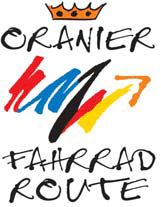Lützel (Hilchenbach)
|
Lützel
City of Hilchenbach
Coordinates: 50 ° 58 ′ 6 ″ N , 8 ° 10 ′ 28 ″ E
|
|
|---|---|
| Height : | 574 (570-650) m |
| Area : | 11.06 km² |
| Residents : | 455 (Jan 31, 2019) |
| Population density : | 41 inhabitants / km² |
| Incorporation : | 1st January 1969 |
| Postal code : | 57271 |
| Area code : | 02733 |
|
"Train station" of the Lützel
|
|
The Lützel is the highest district of Hilchenbach , Siegen-Wittgenstein district , North Rhine-Westphalia ( Germany ).
Geographical location
The village of Lützel is located within the Siegerland in the south-eastern urban area of Hilchenbach and borders on Netphen in the south-south-west and Erndtebrück in the east-north-east. Lützel is located on the Rothaargebirg ridge at 575.1 m above sea level. NHN (town center) on federal road 62 and has several nature reserves in its vicinity . About 1.2 km south-southeast of the village is the "Siedlung Lützel" on the south-east running Eisenstrasse .
The highest point at the Lützel is the 658.5 m high Pfaffenhain , on whose western summit Giller the Gillerturm observation tower stands. The Lützel is passed east of the still young Eder , which rises about 6 km away and flows further into the Wittgensteiner Land to the neighboring town of Erndtebrück. It is traversed by the 2.1 km long Eder tributary Lützelbach, which rises on the Giller east flank within the village and flows off to the east. The hamlet of Altenteich is about 1.5 km in the direction of Erndtebrück at the confluence of the Wehbach and the Eder .
climate
Due to the altitude, the climate on the Lützel is rather rough to cool. Temperatures of 30 ° C are rarely reached in the summer months; in winter, due to the constantly exposed wind, ice deposits often form over the place. The snow depth is between 50 and 80 cm. Because of the steep location from the valley village of Afholderbach , there is often heavy rainfall with moderate to heavy intensity. Furthermore, the Lützel is very susceptible to fog, which can be observed especially in thawing weather. In contrast to the municipality of Erndtebrück , which often has cold minimum temperatures and is only around 8 km away, the Lützel has warmer minimum and cooler maximum temperatures due to its exposed altitude.
history
The area of today's Lützel was first settled in the 12th century. The place was first mentioned in 1547 in its medieval spelling Lutzelnn . Until the municipal reorganization on January 1, 1969, it belonged to the Keppel Office .
In January 2007, hurricane Kyrill destroyed considerable forest areas, mainly spruce stands, in the Lützel, Eisenstrasse, Edertal, Siegquelle and neighboring Benfe area .
Tourism and economy
The Lützel can be reached via the federal road 62 and the Kreuztal – Cölbe railway line . The famous historical Eisenstrasse begins on the Lützel. The place has a small winter sports area, which includes two older ski lifts, around ten km of cross-country trails and a toboggan run. On the Lützel, hikers can hike the Rothaarsteig premium hiking trail directly from the train station . In addition, there are other hiking and cycling trails from and through the Lützel, such as:
- A cycle path on the Orange Route connects the cities of Diez, Nassau, Braunfels, Dillenburg, Siegen and Bad Arolsen, which have been closely linked to the royal family of the Netherlands for many centuries, over around 400 kilometers.
- The 180 km long Eder cycle path starts here. In North Rhine-Westphalia and is called here Ederauenweg . The largest part leads through Hesse and is then called the Eder cycle path . It follows the course of the Eder to its confluence with the Fulda near Guxhagen .
More and more natural and agricultural areas are being converted into industrial sites on the Lützel. This severely affects the original natural landscape, which is detrimental to tourism.
Web links
- Homepage of the city of Hilchenbach
- Lützel (Hilchenbach) in the Westphalia Culture Atlas
Individual evidence
- ↑ https://www.hilchenbach.de/Presse-Stadtportrait/Zahlen-Daten-Fakten/Einwohner
- ↑ Martin Bünermann: The communities of the first reorganization program in North Rhine-Westphalia . Deutscher Gemeindeverlag, Cologne 1970, p. 70 .

